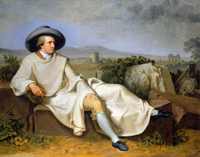RRP: £9.95
BINDING: Paperback
PUBLISHED: 2014
ISBN: 9780946162796
PAGES: 110
Johann Wolfgang von Goethe
Iphigenia in Tauris
Translated from the German by Roy Pascal; Introduction by Martin Swales
The leading Germanist Roy Pascal’s translation of Goethe’s moving version of the Iphigenia-Orestes story was twice broadcast on BBC radio in the 1950s and ’60s. It is now published for the first time. Martin Swales in his Introduction calls the work ‘one of the most perfect poetic dramas that the moral culture of Western Europe has produced’, and Pascal’s translation ‘itself a classic’.
This blank verse drama speaks with particular urgency to us today. Iphigenia, daughter of Agamemnon, leader of the Greek forces in the Trojan War, in exile as a priestess in the barbaric land of the Tauri (Crimea), lifts the Tantalid family curse and ends the chain of revenge killings through the generations. The female identity of the central character is all-important.
‘Roy Pascal’s flexible pentameters and largely natural English retain their attractive lucidity and power some sixty years after they were first written.’ – Glyn Pursglove, Acumen
JOHANN WOLFGANG VON GOETHE (1749–1832) was born in Frankfurt-am-Main. Educated at home in all the subjects of the day, he studied law at Leipzig and Strasburg, and at Leipzig also attended the poetry lessons of the influential Enlightenment figure Christian Gellert. In 1775 he was appointed to an administrative post at the court of the Duke of Weimar, where he remained for the rest of his life.
Goethe was active in numerous fields from literature to the natural sciences, and his well-documented life (particularly the many love affairs) constantly fed into his creative personality. His epistolary novel The Sorrows of Young Werther (Die Leiden des jungen Werthers, 1774) and other early works made him a leading figure in the new Sturm und Drang movement. A visit to Italy in 1786 confirmed his humanistic ideal during this period, Iphigenie in Tauris (1787) being its most mature expression.
Among Goethe’s later works, the verse drama Faust (Part One 1808, Part Two 1832), the novel Wilhelm Meister’s Apprenticeship (Wilhelm Meisters Lehrjahre, 1795–96) and the autobiography Poetry and Truth (Dichtung ind Wahrheit, 1811–33), besides numerous short poems, are the best known.
Author portrait: Goethe in the Roman Campagna Roman (1786) by Johann Heinrich Wilhelm Tischbein


